We use information collected through cookies and similar technologies to improve your experience on our site, analyze how you use it and for marketing purposes.
Your privacy settings
We and our partners use information collected through cookies and similar technologies to improve your experience on our site, analyze how you use it and for marketing purposes. Because we respect your right to privacy, you can choose not to allow some types of cookies. However, blocking some types of cookies may impact your experience of the site and the services we are able to offer. In some cases, data obtained from cookies is shared with third parties for analytics or marketing reasons. You can exercise your right to opt-out of that sharing at any time by disabling cookies.
Manage Consent Preferences
Necessary
Always ON
These cookies and scripts are necessary for the website to function and cannot be switched off. They are usually only set in response to actions made by you which amount to a request for services, such as setting your privacy preferences, logging in or filling in forms. You can set your browser to block oralert you about these cookies, but some parts of the site will not then work. These cookies do not store any personally identifiable information.
Analytics
These cookies and scripts allow us to count visits and traffic sources, so we can measure and improve the performance of our site. They help us know which pages are the most and least popular and see how visitors move around the site. All information these cookies collect is aggregated and therefore anonymous. If you do not allow these cookies and scripts, we will not know when you have visited our site.
Embedded Videos
These cookies and scripts may be set through our site by external video hosting services likeYouTube or Vimeo. They may be used to deliver video content on our website. It's possible for the video provider to build a profile of your interests and show you relevant adverts on this or other websites. They do not directly store personal information, but are based on uniquely identifying your browser and internet device. If you do not allow these cookies or scripts it is possible that embedded video will not function as expected.
Google Fonts
Google Fonts is a font embedding service library. Google Fonts are stored on Google's CDN. The Google Fonts API is designed to limit the collection, storage, and use of end-user data to only what is needed to serve fonts efficiently. Use of Google Fonts API is unauthenticated. No cookies are sent by website visitors to the Google Fonts API. Requests to the Google Fonts API are made to resource-specific domains, such as fonts.googleapis.com or fonts.gstatic.com. This means your font requests are separate from and don't contain any credentials you send to google.com while using other Google services that are authenticated, such as Gmail.
Marketing
These cookies and scripts may be set through our site by our advertising partners. They may be used by those companies to build a profile of your interests and show you relevant adverts on other sites. They do not store directly personal information, but are based on uniquely identifying your browser and internet device. If you do not allow these cookies and scripts, you will experience less targeted advertising.
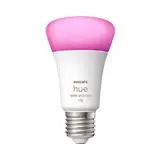
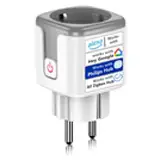
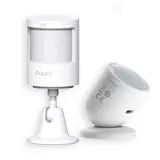
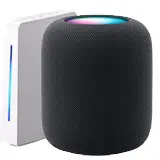
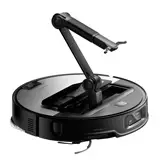

Voice assistant or physical button? Comparison of control methods
Remember when controlling a device meant pressing a button? What a time! Now, we have voice assistants that obey us just by hearing our voice. But which is better, the trusty physical button or the futuristic voice assistant? Let's find out.
The Battle for Control: Voice Assistants vs. Physical Buttons
Technology is advancing by leaps and bounds. Voice assistants have been integrated into our lives. Alexa, Google Assistant, Siri... These are familiar names! But the buttons, those inconspicuous little heroes, are still there. Both control methods have their advantages and disadvantages. Let's analyze them in depth.
The Age of Voice Assistants: Convenience and Hands-Free
The main advantage of voice assistants is undoubtedly convenience. Imagine you are cooking and you need to set a timer. With a voice assistant, all you have to do is say the word - total hands free! They're perfect for multi-tasking.
But not everything is perfect. Voice assistants depend on an internet connection. In addition, privacy is a constant concern. Who is listening? What data is being collected?
Physical Button Reliability: Simplicity and Direct Control
Physical buttons are the antithesis of complexity. They are straightforward, intuitive and do not require an Internet connection. One button does what it says it does, no surprises. Need to turn up the volume? Press the "+" button. Simple, right?
Of course, physical buttons have their limitations. They require physical contact. You can't control them remotely. And they're not as versatile as voice assistants in terms of automation and customization.
In-Depth Analysis: Specific Use Cases
To better understand the differences, let's look at some specific use cases. Where does each control method shine?
Intelligent Lighting Control: A Practical Example
Imagine you have smart lights in your home. You can control them with a voice assistant. "Alexa, turn on the living room lights." Done! But you can also use a physical switch. At night, when you don't want to talk and wake anyone up, the button is your best ally.
The Car of the Future: Voice Assistants at the Wheel
In the car, voice assistants are incredibly useful. You can ask Siri to play music, give you directions or make a call, all without taking your hands off the wheel. But for basic functions like turning the volume up or down, physical buttons are still safer and faster.
Smart Appliances: An Ideal Combination
Smart appliances offer a combination of both worlds. You can use a voice assistant to program the dishwasher or washing machine. But to quickly turn the oven on or off, a physical button is more practical.
Comparison Chart: Voice Assistant vs. Physical Button
To summarize, here is a comparison chart highlighting the main differences between voice assistants and physical buttons:
Practical Advice: How to Choose the Right Control Method?
The choice between a voice assistant and a physical button depends on your personal needs and preferences. Here are some tips to help you decide:
Consider your Specific Needs
What do you want to control? How important is comfort? Are you concerned about privacy? Answer these questions to identify your priorities.
Evaluates the Environment
Where are you going to use the device? Is it a noisy environment? Is there a good internet connection? The environment can influence the effectiveness of each control method.
Test Both Methods
If possible, try both methods before making a decision. Experiment with a voice assistant and use a device with physical buttons. Which do you find more intuitive and easier to use?
Combines the Best of Both Worlds
You don't have to choose just one method. Many devices offer a combination of voice assistants and physical buttons. This is the best option to take advantage of both.
Best Practices: Optimizing your Control Experience
Regardless of the control method you choose, here are some best practices to optimize your experience:
For Voice Assistants:
For Physical Buttons:
The Future of Control: What Awaits Us?
The future of control is hybrid. We will see greater integration of voice assistants and physical buttons. Artificial intelligence will continue to improve the accuracy and reliability of voice assistants. And physical buttons will become smarter and more customizable. The key is to offer users the flexibility to choose the control method that best suits their needs.
In addition, we are seeing the emergence of new technologies such as gesture control and brain-computer interface. These technologies promise to revolutionize the way we interact with the world around us.
Conclusion: Choose Your Own Path
In the battle between voice assistants and physical buttons, there is no absolute winner. Both control methods have their strengths and weaknesses. The best choice depends on your needs, preferences and the context in which you use them. The important thing is to choose the method that makes your life easier and more pleasant.
Which do you prefer: the voice assistant or the physical button? Share your opinion in the comments - and don't forget to share this article with your friends!
Related Posts
How to connect old appliances to a smart home
Do you have old appliances that you love but feel out of the smart home loop? Don't worry! You don't have to get rid of your retro toaster or your trusty coffee maker to join the automation revolution. Integrating old appliances into your smart home is easier than you think. We'll show you ...
Morning automation: how to wake up with lights and music
Waking up can be a battle. The shrill sound of the alarm jolts you out of a deep sleep, leaving you groggy and grouchy. What if there was a better way? Imagine waking up gradually with soft light and your favorite music. That's the promise of morning automation, and it's at your fingertips.What's ...
Home Assistant vs Alexa vs Google Home: Which one to choose?
Is your home ready to make the leap to artificial intelligence? Controlling the lights with your voice, turning up the heating before you get home, or even programming the watering of the garden are just some of the wonders that home automation puts within our reach. But which ecosystem to start with? The choice between Home ...
TOP 10 most useful voice commands for a smart home
Can you imagine controlling your home with just your voice? A smart home is no longer the stuff of science fiction. It's an accessible reality, and voice commands are the key to unlocking its potential. Stop looking for switches and start talking. Discover the 10 most useful voice commands that will transform your life ...